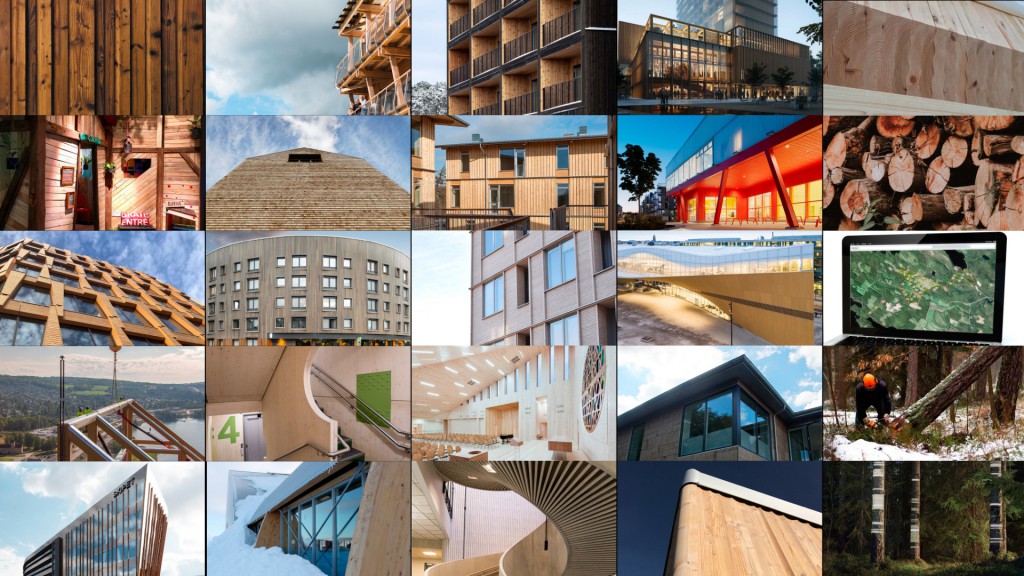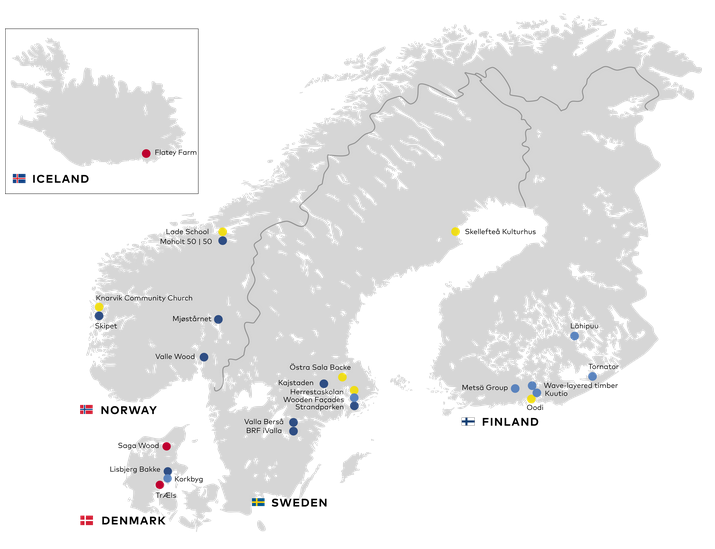Wood has the ability to act as a carbon sink and therefore holds a great potential in the transition towards a low-carbon construction industry. How? Well, here are 25 examples across the value chain from all Nordic countries.
The new report Wood in Construction: 25 cases of Nordic Good Practice not only shows us that the future of construction is made of wood, it also gives us a glimpse into an urban future that is alive, healthy, and full of life quality. The report, published by the Nordic Wood in Construction Secretariat, an initiative commissioned by the Swedish Government and the Nordic Council of Ministers, and hosted by EIT Climate-KIC, highlights 25 cases with innovative and environmental approaches to using wood in construction.

The Nordics are pushing the boundaries on wood in construction
The cases show that the Nordic countries are tackling growing urban populations with an approach that is sustainable and easily replicable world over. By combining sustainable forest management with construction, the Nordics prove that growing cities does not have to mean more pollution and carbon emissions – quite the contrary.
Many projects showcased in the report became the tallest or the largest timber project of their type upon completion. As such, the Nordic countries are constantly challenging the possibilities of building in wood, with developers investing in timber construction in order to scale up over time and creating a sustainable alternative to steel, glass and concrete in our cities and built environment.
The future of buildings spells green, fast and healthy
In addition to the increasingly fashionable Nordic look of a building made of wood, let’s zoom in on some of the benefits of moving on from building in cement and steel. Using wood as a building material has a number of health benefits, the major one being that it improves indoor air quality due to its moisture absorbing properties. It’s naturally also more environmentally friendly than its gray alternatives, as it embeds carbon in its structure. Finally, timber is both lightweight and often prefabricated, which enables fast construction time and money saved on transportation.
But the benefits of building in wood should not only be seen from the perspective of those constructing and using the buildings in urban contexts. Improved forestry management and demand for high quality timber products also brings opportunities for rural areas around the Nordics that are dependent on revenue streams from natural resources, such as forests.

An industry with a big carbon price tag
As the construction industry is responsible for upwards of a third of all carbon emissions globally, the Nordics are getting onto the right path by challenging which building materials we use – and reuse – when we approach an increasing need for buildings to accommodate a growing global population. Using wood from sustainable forestry, buildings will act as a carbon sink instead of emitting additional carbon to the atmosphere. Wood is therefore both an economically more viable material, while enabling buildings that are healthy for end-users and the environment.
The benefits to using wood in construction seem to be endless and we have only seen the beginning of its positive impacts. If you want to learn more about the benefits of using wood in construction and dive into the 25 good practice cases from around the Nordics, you can see each of the 25 cases online here.
Source
Nordic Wood in Construction Secretariat, press release, 2019-03-27.
Supplier
Government of Sweden
Nordic Wood in Construction Secretariat
Share
Renewable Carbon News – Daily Newsletter
Subscribe to our daily email newsletter – the world's leading newsletter on renewable materials and chemicals









